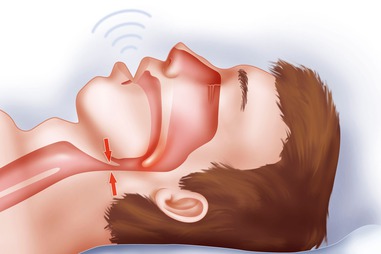- A/1, Satyalok Society, Near Police Station, Near Gadital Petrol Pump, Hadapsar, Pune
Snoring & Obstructive Sleep Apnea
- Home
- Snoring & Obstructive Sleep Apnea
Snoring & Obstructive Sleep Apnea
While sleeping and breathing, turbulent airflow makes the soft palate tissues of the roof of the mouth and the throat vibrate and create a peculiar sound that is known as snoring.
Snoring is taken more as a social problem rather than a medical one. After all, it is usually more problematic for those around the snorer rather than the snorers themselves.
But snoring can sometimes actually be a sign of a way more serious problem. Snorers need to be investigated for serious conditions such as sleep apnea and other sleep-related breathing disorders.
Sleep apnea is basically a stoppage of breathing, or a pause, during sleeping. Consult Dr. Satish Bhong ENT – Sleep apnea treatment In Pune. We are delighted to be India’s largest and best-equipped Ashirwad ENT & Maternity Hospital, Pune.
Causes of Snoring & Obstructive Sleep Apnea
There are two types of sleep apneas – central and obstructive.
Central sleep apnea occurs when the brain fails to send appropriate signals to breathing muscles to start respiration.
Obstructive sleep apnea occurs when despite trying; air does not flow in and out from the nose or mouth of the sleeper. In this case, snoring is not the core issue, it is actually one of the symptoms of obstructive sleep apnea.
Symptoms
Under obstructive sleep apnea, the patient starts to snort and gasp as their throat collapses which leads to brief spells of wakefulness from sleep. As the number of such episodes can run into hundreds every night, the sleep is fragmented, makes the patient sleepy throughout the waking
Precautions & Treatments
- An ENT physician takes the following steps to evaluate a patient with Snoring and Obstructive Sleep Apnea: –
1. The doctor takes a detailed sleep history from both the patient and his/her bed partner.
2. A physical examination is conducted to check the patient’s weight, height and BMI (body mass index) numbers. The neck circumference is also measured.
3. Nose and throat are checked to assess width (or rather, lack of it) of oral and nasal passages.
4. The doctor may also recommend an overnight sleep study in a sleep lab to assess the specifics of the patient’s sleep.
5. The doctor may also seek a sleep endoscopy (DISE) to get a clearer assessment of structural issues causing obstructive sleep apnea. In it, sleep is induced and an endoscope is passed through the nasal and oral passages of the patient to check for the exact location of narrowing.
6. If required, the doctor may also order CT scans of the nose and paranasal sinuses, and dynamic MRI (cine MRI). - Two broad categories of treatment available for patients with Snoring and Obstructive Sleep Apnea – non-surgical and surgical.
- Non-surgical ways to treat snoring and obstructive sleep apnea: –
1. Behavioural changes such as weight loss, abstinence from smoking and alcohol, switching sleeping positions, and changing medications.
2. Dental devices designed by a dentist that has to be worn every night. These are used to hold the jaw and the tongue forward but can cause jaw joint problems and excessive salivation in the user.
3. Nasal devices and medications such as nasal saline sprays, nasal steroid sprays and nasal decongestants. (Actually, these devices can also help patients with allergy, irritation, deviated nasal septum and sinusitis issues besides snorers.)
4. A device called nasal CPAP that provides a constant and higher than normal air pressure to prevent airway narrowing during in- and out-breath. This rather uncomfortable device requires the patient to wear a mask connected by tubing to a pump that keeps the air pressure high. This device requires constant adjustment by the patient. - Surgical ways to treat snoring and obstructive sleep apnea: –
1. Nasal surgery: The narrow nasal passage is widened by correcting deviated nasal septum, reduction in the size of inferior turbinates (structures on the side wall of the inside of the nose), and/or removal of nasal polyps and other obstructions. Radiofrequency ablation is the most advanced and the best-recommended procedure for this surgery. Microdebriders are another excellent choice as these remove polyps quickly and safely.
2. Oral surgery: If snoring is caused by long, floppy palate and uvula, the ENT surgeon can either remove the tissue or stiffen it up. Radiofrequency ablation and laser are the most advanced and the best-recommended procedures for this surgery.
3. Oropharyngeal surgery: The ENT surgeon can undertake procedures such as midline glossectomy, tongue base reduction, repose tongue suspension, and genioglossal advancement to widen the oropharyngeal (middle part of the throat) air passage.
4. Advanced surgical options: In rare cases, the ENT surgeon can choose more complex procedures such as epiglottectomy, hyoid suspension, or maxillomandibular advancement.

